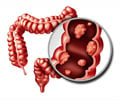A new method to block the activity of the fusion protein behind Ewing's sarcoma-a rare cancer found in children and young adults has been uncovered
A new method to block the activity of the fusion protein behind Ewing's sarcoma-a rare cancer found in children and young adults has been uncovered by scientists at Georgetown University Medical Center (GUMC).
In a new study, the researchers have discovered and successfully tested a small molecule that prevents the fusion protein from sticking to another protein that is critical for tumour formation.The researchers claim that this unique interaction is especially surprising as the Ewing's sarcoma fusion protein is extremely flexible, which allows it to change shape constantly.
"Most targeted small molecule cancer drugs inhibit the intrinsic activity of a single protein, but our agent stops two proteins from interacting. This has never been shown before with a cancer-causing fusion protein and represents a potentially novel medical therapy in the future," Nature magazine quoted the study's lead investigator, Dr. Jeffrey Toretsky, as saying.
According to the researchers, the study could provide a model on which it would be possible to design treatment for other disorders caused by the interaction between two proteins.
The model could also be useful in cancers caused by translocations of genes, such as sarcomas and leukaemias.
Currently, the agents that work against fusion proteins inhibit a single protein to stop intrinsic enzymatic activity, for example Gleevec, which is used for chronic myelogenous leukemia (CML).
Advertisement
The researchers are the first to make a recombinant EWS-FLI1 fusion protein, and use it to discover that the fusion protein stick to another protein, RNA helicase A (RHA)-a molecule that forms protein complexes in order to control gene transcription.ater, they searched for a small molecule that would bind on to EWS-FLI1 from a library of 3,000 small molecules.
Advertisement
The researchers believe that this is a wonderful discovery because scientists have long believed that it is not possible to block protein-protein interactions given that the surface of many of these proteins are slippery - much too flexible for a drug to bind to.
"We may be able to use this strategy to attack proteins we thought to be impervious to manipulation," said the researchers.
The study has been published online in Nature Medicine.
Source-ANI
RAS











